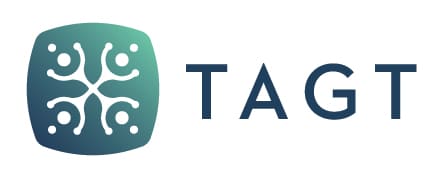I noticed that Diego was the first student in the eighth-grade math class to finish the assignment. He was a quiet and respectful student who did not volunteer to speak in class because he had difficulty pronouncing academic math terms, like slope and y-intercept. However, he willingly assisted the student paired with him by correcting this student’s mistakes and helping him complete the math problems. Diego was in his first full year in U.S. schools, having arrived at the end of the previous school year. I was told he was educated in his home country and aspired to become an engineer.
As I worked with Diego over the semester, it became clear that the assigned math work was beneath his ability, and he was capable of much more. He had been placed in a remedial math class instead of one of the more advanced classes because of his lack of English. However, his teacher recognized that he was good in math, and after I advocated for him, willingly provided individualized instruction to help him catch up so that he could take a more advanced math class the next year. Even with the more advanced math material, Diego had an intuitive understanding of mathematical functions and processes, could see patterns and relationships in concepts and data, and could grasp new concepts quickly—all characteristics of a gifted student.
Gifted Multilingual Learners
Giftedness occurs equally in all populations; however, gifted multilingual learners are not represented equally in gifted programs. Diego was a gifted multilingual learner who was unrecognized and underserved. And there are many more students like him. As indicated in the NEA English Language Learner Toolkit (National Education Association, 2020), by 2025, an estimated 25% of public school students will be language learners. As Mun et al. (2020) noted, despite the growing number of multilingual learners, their representation in gifted and talented programs continues to fall behind not only in traditional populations of learners (Callahan, 2005; Coronado & Lewis, 2017; Hodges et al., 2018), but also in all underserved populations, including twice-exceptional, rural, Hispanic, Native American, and Black students (Matthews, 2014; Siegle et al., 2016). Peters (2022) noted, “This inequity has been well documented in public schools since at least the 1970s and has been stubbornly persistent despite receiving substantial attention at conferences, in scholarly journals, and in K–12 schools” (p. 82). So, what is the solution to this problem? We must begin by helping all educators and families recognize and identify gifted multilingual learners.
Definition of Gifted Multilingual Learners
Multilingual Learners
It is helpful to begin by defining the term multilingual learner. Educators have used a variety of terms when referring to students who are learning English, and the use of these terms has evolved over time as federal legislation has changed. The Bilingual Education Act in 1968 used the term Limited English Speaking Ability (LESA). When this legislation was reauthorized in 1978, the term Limited English Proficient (LEP) was used. In 2001, the No Child Left Behind Act used the term English Language Learner (ELL), and in 2015, the Every Student Succeeds Act shortened the term to English Learner (EL; Garcia, 2021). Other terms have also been used to refer to these students, including non-native English speakers, language-minority students, bilingual students, and more recently in Texas, emergent bilingual (EB) students. The term multilingual learner is currently being used at the national level because it accentuates the positive asset that language learners bring: the strength of knowing many languages.
The current federal definition of multilingual learners in ESSA (Title VIII, Part A, Section 8101.20) uses the term English learners and maintains the definition that was first used in the Elementary and Secondary Education Act. An English learner is defined as a student:
(A) who is aged 3 through 21;
(B) who is enrolled or preparing to enroll in an elementary school or secondary school;
(C ) (i) who was not born in the United States or whose native language is a language other than English; (ii)(I) who is a Native American or Alaska Native, or a native resident of the outlying areas; and (II) who comes from an environment where a language other than English has had a significant impact on the individual’s level of English language proficiency; or (iii) who is migratory, whose native language is a language other than English, and who comes from an environment where a language other than English is dominant; and
(D) whose difficulties in speaking, reading, writing, or understanding the English language may be sufficient to deny the individual (i) the ability to meet the State’s proficient level of achievement on State assessments described in section 1111(b)(3); (ii) the ability to successfully achieve in classrooms where the language of instruction is English; or (iii) the opportunity to participate fully in society.
Gifted Learners
A working definition of gifted students was provided in 1972 in the Marland Report (Jolly & Robbins, 2022). This report, submitted to Congress by Commissioner of Education Sidney P. Marland, presented the federal government’s formal definition of giftedness and outlined the unique learning needs and challenges of gifted students in U.S. schools. The current federal definition of gifted children, adapted from the Marland Report, can be found in the ESSA. This definition, which maintains the prior authorization of No Child Left Behind’s (NCLB) definition of gifted students, identifies gifted and talented students as:
Students who give evidence of high achievement capability in areas such as intellectual, creative, artistic, or leadership capacity, or in specific academic fields, and who need services or activities not ordinarily provided by the school in order to fully develop those capabilities (Title VIII, Part A, Section 8101.27)
Gifted Multilingual Learners
There is no one agreed-upon definition of a gifted multilingual learner. However, we can combine the definitions of gifted and talented students and English learners from ESSA (Title VIII, Part A, 8101.27, 8101.20) to provide a working definition:
A gifted multilingual student is a student who is “age 3–21 and not born in the U.S. or whose native language is a language other than English,” “who gives evidence of high achievement capability in areas such as intellectual, creative, artistic, or leadership capacity, or in specific academic fields,” and who needs both “services or activities not ordinarily provided by the school in order to fully develop those high achievement capabilities,” and “services to develop the language skills necessary to meet the challenging State academic standards, achieve in classrooms where the language of instruction is English, and participate fully in society.” (Voss, in press)
It is important to note that this definition implies that gifted multilingual learners have characteristics that relate both to their giftedness and to the fact that they are a language learner. They also have two sets of instructional needs, including the need for advanced, challenging learning opportunities that address their giftedness and the need for language support as they acquire the English language.
Characteristics
Research suggests that gifted multilingual learners essentially display characteristics similar to those of English-speaking gifted students. They learn quickly, are able to see relationships and make connections, are inquisitive, can reason and solve problems, have a good memory, are creative, and are motivated to learn. What is different for these students is the emphasis on their gifts within the cultural context of learning a second language (Iowa Department of Education, 2008).
Characteristics of Gifted Multilingual Learners
Over the years, various researchers have enumerated these characteristics. Gallagher (2007) was among the first to do this, identifying cognitive and socioemotional characteristics of gifted students from diverse cultural, religious, language, and socioeconomic settings. He found gifted language learners to be highly verbal, highly curious to engage in abstract reasoning, and absorbed in self-selected tasks. He also found them to demonstrate social maturity at home and in the community, prefer older classmates, and understand the importance of family and culture.
Brulles et al. (2011) found gifted English language learners to have a strong desire to learn in English and their native language, and exhibit exceptional talent in areas valued by their culture. They also found that these students are able to interpret and translate for peers and adults with high levels of accuracy, code switch, and learn a second or third language at an accelerated pace. Gifted language learners also eagerly share their culture, have an awareness of other cultures and languages, and have a strong sense of pride in their own culture.
Gifted Hispanic Students
Brulles et al. (2011) identified additional characteristics that are particular to Hispanic gifted students, including a strong desire to learn English and their native language, creative thinking ability, enjoyment of problem solving, and curiosity.
Bernal and Reyna (1974) identified characteristics that were typical among gifted Hispanic American children. These students rapidly acquire English language skills when exposed to the language and given an opportunity to use it expressively, exhibit leadership ability, although often in an open or unobtrusive manner, have strong interpersonal skills, tend to have older playmates, and easily engage adults in lively conversation. They also enjoy intelligent and effective risk-taking behavior, often accompanied by a sense of drama, and keep busy and entertained, especially by imaginative games and ingenious applications. In addition, they accept responsibilities at home normally reserved for older children, such as supervising younger siblings or helping others do their homework, are streetwise, and are recognized by others as youngsters who have the ability to make it in the Anglo-dominated society.
Gifted Bilingual Hispanic Students
Irby and Lara-Alecio (1996) focused on attributes of Hispanic gifted students who are bilingual. From their research, they developed the Hispanic Bilingual Gifted Screening Instrument (HBGSI), which identified the following clusters of behaviors associated with gifted Hispanic bilingual students: social and academic language, cultural sensitivity, familial motivation for learning, collaboration, imagery, achievement, support, creative performance, problem solving, and a locus of control.
Culturally and Linguistically Diverse Students
Smith-Peterson et al. (2015) broadened the field of reference to develop the Culturally, Linguistically Diverse, and/or Economically Disadvantaged (CLED) Scales. They found that high-potential culturally and linguistically diverse learners display a strong sense of pride in their cultural background, a desire to teach peers words from their native language, an eagerness to translate for peers and adults, a balance between appropriate behaviors expected of their native culture and the new culture, and an ability to explain native dialect and idioms (e.g., play on words, slang). They also show an understanding of jokes and puns related to culture, the ability to read above their grade level, either in English or their native language, above-average English language proficiency growth, social maturity, and ease in adapting to new environments.
High-Potential Culturally and Economically Diverse Learners
Smith-Peterson et al. (2015) also focused on characteristics of students who were economically and culturally diverse. They found that high-potential culturally and economically diverse students effectively communicate through expressive speech rich with imagery, have an interest in others from cultures different from their own, have a high degree of emotional responsiveness (i.e., spontaneous, open, share feelings), are aware of themselves as capable learners, display an independent nature, have a strong sense of altruism (i.e., caring about others), and a keen sense of justice. These students also have an ability to express emotions, portray richness in imagination through informal language, and have a questioning orientation (i.e., strong sense of curiosity, tendency to ask questions).
Characteristics of Gifted Multilingual Learners: A Synthesis
No particular list of characteristics of gifted multilingual learners has been agreed upon for common use. However, the authors of Identifying Gifted and Talented English Language Learners (Iowa Department of Education, 2008) synthesized many of the aforementioned characteristics in categorizing the characteristics of gifted English language learners developed in Project GOTCHA (Galaxies of Thinking and Creative Heights of Achievement), which was a Title VII grant project codirected by Nilda Aguirre, Executive Director of the National Association for Bilingual Education, and Norma Hernandez (Aguirre & Hernandez, 2002). These categories included school-, language-, and culture-based characteristics.
School-Based Characteristics:
- Able to read in their native language two grade levels above their current grade.
- Show high ability in mathematics.
- Advanced in creative domains (fluency, elaboration, originality, flexibility).
- A leader in multiple settings (playground, home, clubs).
Language-Based Characteristics
- Demonstrates language proficiency at higher levels than other English language learners.
- Learn multiple languages at an accelerated pace.
- Show the ability to code switch.
- Teach words from their heritage language.
- Willing to translate for others.
- Superior knowledge of phrases and heritage dialects and the ability to translate into English.
- Grasp jokes related to cultural differences.
Culture-Based Characteristics:
- Balance behaviors expected in both the heritage and the new culture.
- Willing to share heritage culture.
- Show pride in culture and ethnic background.
- Demonstrate a global sense of community and respect for cultural differences.
Becoming a Talent Scout: Observing Gifted Multilingual Learners
Gubbins et al. (2020) discussed the need for a paradigm shift in which all stakeholders move from being deficit detectors, who search for reasons why students should not qualify for gifted services, to talent scouts, who recognize the diverse ways students manifest their talents. Although there is a need for additional research to find valid and reliable rating scales specific to multilingual learners to use as a part of the gifted assessment process (R. Mun, personal communication, February 28, 2022), there are some instruments that teachers and parents can use to become talent scouts looking for the behaviors and characteristics of gifted multilingual learners.
One of the first such tools was developed by the Texas Education Agency Equity in Gifted Education Task Force, led by Paul Slocumb and Richard Olenchak (Slocumb & Olenchak, 2006). The Varied Faces of Gifted/Talented Students compares the traditional perception of gifted and talented students with gifted students from poverty, English language learners from poverty who are also gifted and talented students, and Special Education or 504 students from poverty who are also gifted and talented students on a number of characteristics related to learning, motivation, creativity, and the affective domain. In more recent years, observation tools have evolved to include an option for rating students.
Karen Westberg, Professor Emerita from the University of St. Thomas, and Kelly Stewart, coordinator of learning analytics from Spring Lake Park Public Schools (Smith-Peterson et al., 2015) developed the High Potential Culturally and Linguistically and Economically Diverse (CLED) Scales. This instrument contains two separate scales that provide characteristics to observe for high-potential culturally and linguistically diverse learners and high-potential culturally and economically diverse learners.
Donna Albrecht, Director of Graduate Studies in Education and Coordinator of the ENL/ESL and Gifted and Talented Programs at Indiana University Southeast, developed the Characteristics of English Learners with High Abilities, Gifts, and Talents Scale that takes into account both academic traits and personal dispositions, which provides another way for educators and parents to look for talent in multilingual students (Albrecht, 2023). As a special note, with these tools and any others, training to understand the terms and the ways the tools should be used is imperative. In addition, parents should receive the information from these scales in their native language.
Conclusion
Many researchers agree that the starting point of any successful gifted and talented identification model for multilingual learners should be the acknowledgment that gifted potential exists in all groups of children (Mun et al., 2020). Educators and parents, guardians, and caretakers who understand that giftedness can be revealed in different ways are more likely to identify multilingual students as gifted (Gubbins, 2020). Helping teachers and parents use the information presented in this article to recognize gifted multilingual learners and understand their characteristics is a means to this end. When this can be accomplished, gifted multilingual learners like Diego will be identified and served.
References
Aguirre, N., & Hernandez, N. (2002). Portraits of success: Programs that work. In J.A. Castellano & E. I. Diaz (Eds.), Reaching new horizons: Gifted and talented education for culturally and linguistically diverse students (pp. 200–219). Allyn & Bacon.
Albrecht, D. (2023). A framework for identifying and supporting English learners with high abilities, gifts, and talents. In T. Neal (Ed.), Strategies and considerations for educating the academically gifted (pp. 136–153). IGI Global.
Bernal, E. M., & Reyna, J. (1974). Analysis of giftedness in Mexican American children and design of a prototype identification instrument. https://files.eric.ed.gov/fulltext/ED090743.pdf.
Brulles, D., Castellano, J. A., & Laing, P. C. (2011). Identifying and enfranchising gifted English language learners. In J. A. Castellano & A.D. Frazier (Eds.), Special populations in gifted education: Understanding our most able students from diverse backgrounds (pp. 305–313). Prufrock Press.
Callahan, C. M. (2005). Identifying gifted students from underrepresented populations. Theory Into Practice, 44(2), 98–104. https://doi.org/10.1207/s15430421tip4402_4
Coronado, J. M., & Lewis, K. D. (2017). The disproportional representation of English language learners in gifted and talented programs in Texas. Gifted Child Today, 40(4), 238–244. https://doi.org/10.1177/1076217517722181
Gallagher, R. M. (2007). Nurturing global citizens for the 21st century. Understanding Our Gifted, 20(1), 7–11. http://www.our-gifted.com/Back%20Issues.htm
Garcia, A. (2021, June 17). Words matter: The case for shifting to “Emergent Bilingual.” Language Magazine. https://www.languagemagazine.com/2021/06/17/words-matter-the-case-for-shifting-to-emergent-bilingual
Gubbins, E. J., Siegle, D., Peters, P. M., Carpenter, A. Y., Hamilton, R., McCoach, D. B., Puryear, J. S., Langley, S. D., & Long, D. (2020). Promising practices for improving identification of English learners for gifted and talented programs. Journal for the Education of the Gifted, 43(4), 336–369. https://doi.org/10.1177/0162353220955241
Hodges, J., Tay, J., Maeda, Y., & Gentry, M. (2018). A meta-analysis of gifted and talented identification practices. Gifted Child Quarterly, 62(2), 147–174. https://doi. org/10.1177/0016986217752107
Iowa Department of Education & The Connie Belin and Jacqueline N. Blank International Center for Gifted Education and Talent Development. (2008). Identifying gifted and talented English language learners (grades K–12). https://educateiowa.gov/sites/default/files/documents/IdentifyGiftedTalentedELL.pdf
Irby, B., & Lara-Alecio, R. (1996). Attributes of Hispanic gifted bilingual students as perceived by bilingual educators in Texas. SABE Journal, 11, 120–143. http://www.teachbilingual.com/docs/nysabe.pdf
Jolly, J. L., & Robins, J. H. (2022). The Marland Report: A defining moment in gifted education. Journal for the Education of the Gifted, 45(1), 3. https://doi.org/10.1177/01623532211064366
Matthews, M. S. (2014). Advanced academics, inclusive education, and English language learners. In M. S. Matthews & J. A. Castellano (Eds.), Talent development for English language learners (pp. 11–14). Prufrock Press.
Matthews, M. S. (2021). Advanced academics, inclusive education, and English language learners. In M. S. Matthews & J. A. Castellano (Eds.), Talent development for English language learners (pp. 1–13). Prufrock Press.
Mun, R. U., Hemmler, V., Langley, S. D., Ware, S., Gubbins, E. J., Callahan, C. M., McCoach, D. B., & Siegle, D. (2020). Identifying and serving English learners in gifted education: Looking back and moving forward. Journal for the Education of the Gifted, 43(4), 297–335. https://doi.org/10.1177/0162353220955230
National Education Association. (2020, July). English language learners toolkit. https://www.nea.org/resource-library/english-language-learners
Peters, S. J. (2022). The challenges of achieving equity within public school gifted and talented Programs. Gifted Child Quarterly, 66(2), 82–94. https://doi.org/10.1177/00169862211002535
Slocumb, P. D., & Olenchak, F. R. (2006). Equity in gifted education: A state initiative. Texas Education Agency. https://www.lisd.net/cms/lib/TX01918037/Centricity/Domain/134/equity_in_ge1.pdf
Smith-Peterson, M., Stewart, K., & Westberg, K. (2015). Finding high potential among culturally, linguistically and economically diverse students: Two new scales for equitable identification. Voice: Challenging Gifted Learners, Fall 2015, 1, 3–8.
Siegle, D., Gubbins, E. J., O’Rourke, P., Langley, S. D., Mun, R. U., Luria, S. R., Little, C. A., McCoach, D. B., Knupp, T., Callahan, C. M., & Plucker, J. A. (2016). Barriers to underserved students’ participation in gifted programs and possible solutions. Journal for the Education of the Gifted, 39(2), 103–131. https://doi.org/10.1177/0162353216640930
Voss, M. (in press). Gifted multilingual learners: Answers for educators. [Manuscript submitted for publication].
Marcy Voss, M.Ed., recently retired after 36 years in public education. During her career, she coordinated gifted and special programs in several districts, as well as served on the Commissioner’s Gifted and Talented Advisory Council and the TAGT Board. Marcy currently serves as facilitator for the TAGT Emerging Leaders Program in addition to working as an English language learner coach, curriculum writer, and staff development trainer. She is also the parent of three gifted children. She may be reached at vossm57@gmail.com.







